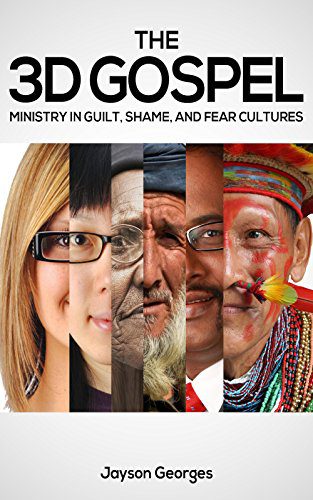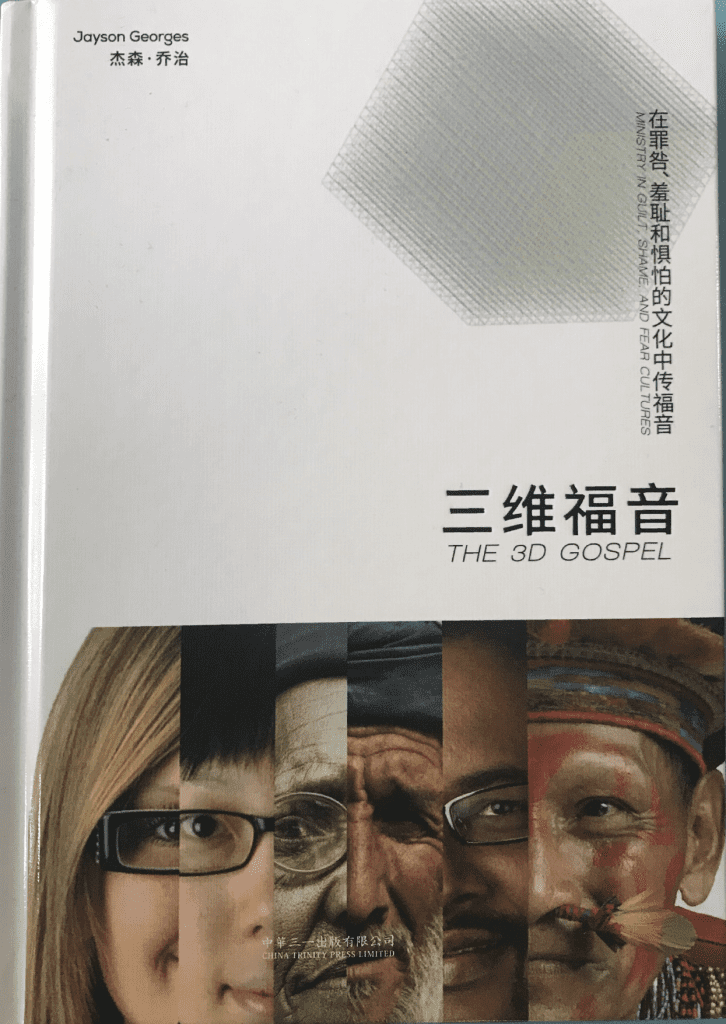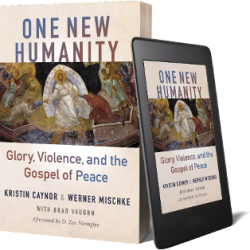Good news! The 3D Gospel: Ministry in Guilt, Shame, and Fear Cultures (by Jayson Georges) has now been translated into simplified Chinese characters. It is titled 三维福音.
I know many people have read the original English version of Jayson’s book, so I will only give a brief introduction to The 3D Gospel before highlighting aspects of the new translation.
(The book is available through Logos Hong Kong. It will be available from Ambassadors for Christ in the US later in the summer.)
Summarizing 3 Dimensions of Culture
 The subtitle captures the book’s essence. The 3D Gospel is a concise introduction to guilt, shame, and fear cultures. It specifically reflects on the way these three dimensions influence theology and ministry across cultures.
The subtitle captures the book’s essence. The 3D Gospel is a concise introduction to guilt, shame, and fear cultures. It specifically reflects on the way these three dimensions influence theology and ministry across cultures.
Due to its brevity (the English version spans about 70 pages), readers should not expect an extensive explanation and defense of various concepts and proposals. Accordingly, some people might (unfairly) accuse Georges of oversimplifying cultures, as though a culture were only a single type.
The book has three main sections (chapters 2–4). The first (Ch. 2) explains what is meant when we categorize a culture with phrases like “Guilt-Innocence”, “Honor-Shame”, and “Fear-Power.” Georges does not claim that one culture type is inherently better than another. Rather, he suggests that each culture-type addresses different human needs.
Chapter 3 looks at the interaction between the Bible and the three culture types. Georges begins with this introduction:
The guilt-shame-fear trichotomy additionally serves as a framework for interpreting Scripture and contextualizing theology. This section analyzes the biblical narrative and theological categories from each perspective. Examining the gospel from multiple vantage points can help Christians acquire a fuller understanding of the gospel. Yet we must remember the Bible is one narrative in which forgiveness, honor, and power are woven together.
As an introduction, Georges achieves his purpose. Readers should expect to come away with many questions when finished with this section. It should spur deeper reflection and discussion.
Finally, chapter 4 offers a few initial proposals concerning potential implications for ministry. For instance, he suggests ways that people might adapt the way they present the gospel in different contexts. He calls readers to consider the goal of their ministry strategies. We should understand the need to contextualize our ministry in light of different types of cultures.
Explaining Guilt, Shame, and Fear in Chinese
 Unlike many translated works, The 3D Gospel does not take a “cookie-cutter” approach when translating particular concepts. It appropriately conveys the nuance inherent to the concepts of honor and shame. Accordingly, the book uses different Mandarin terms to convey thee particular sense intended by Georges. As I’ve explained elsewhere, words conveying “honor” include 尊荣, 荣誉 , 荣耀 , 尊崇, among others; for “shame,” expect to see words like 羞辱, 羞耻, 耻辱 and commonplace expressions like “losing face” (e.g., 丢脸, 丢面子).
Unlike many translated works, The 3D Gospel does not take a “cookie-cutter” approach when translating particular concepts. It appropriately conveys the nuance inherent to the concepts of honor and shame. Accordingly, the book uses different Mandarin terms to convey thee particular sense intended by Georges. As I’ve explained elsewhere, words conveying “honor” include 尊荣, 荣誉 , 荣耀 , 尊崇, among others; for “shame,” expect to see words like 羞辱, 羞耻, 耻辱 and commonplace expressions like “losing face” (e.g., 丢脸, 丢面子).
The concept of guilt likewise requires careful translation since one could refer either to objective guilt (e.g., 罪责) or subjective guilt (e.g., 内疚). For “fear-power” cultures, an natural, unsurprising choice in terms was used (惧怕-力量).
I often find myself disappointed with English-to-Mandarin translations. This is due to the nature of theological debates and the demand for nuance. The translators sought to make sure this book made sense and reflected the original meaning of Georges’ book. They consulted with people, including myself, who had experience discussing these concepts with Chinese Christians.
I highly recommend people get a copy of 三维福音 (The 3D Gospel). Readers will gain much insight. This is a book that could be used stimulate fruitful discussion within their teams and churches.












